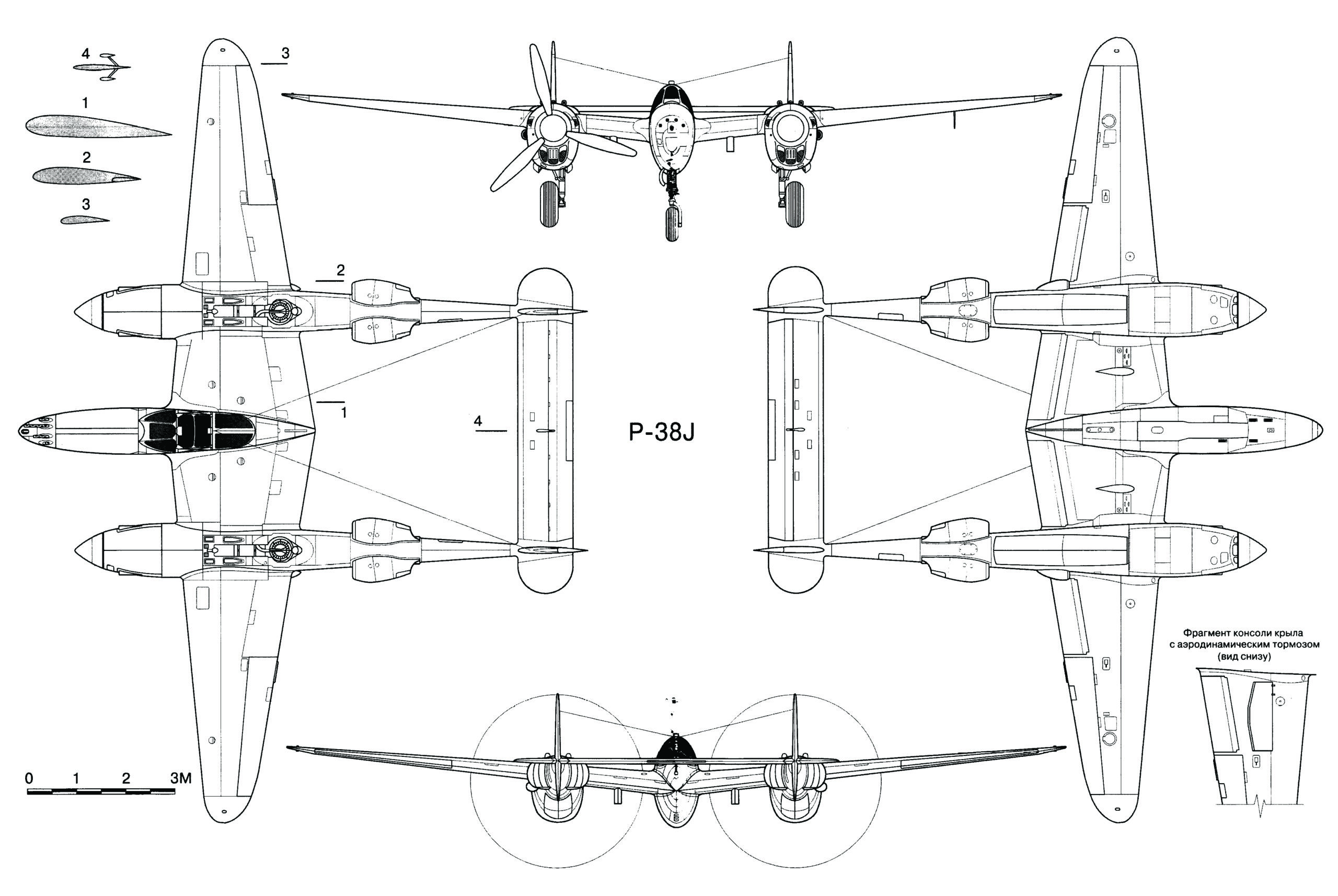Though the P-38 struggled on the European front, the Lightning more than made up for any shortcomings as it dominated the skies over the Pacific, earning its place as one of the most successful fighters of the Allies in WWII.
Production of the fastest variant of the P-38 aircraft, the P-38J high-altitude interceptor, began in 1943. The P-38J was used as a long-range escort fighter and performed many roles and tasks, such as dive-bombing, level bombing, ground strafing (the practice of attacking ground targets from low-lying aircraft) and photoreconnaissance missions during World War II. Production of these aircraft ended in 1945 after 3,000 P-38J models had been built. The P-38 enjoyed several ”firsts” in its illustrious career. It was the first fighter with speeds over 400 mph, the first fighter with tricycle landing gear, the first airplane to employ power-boosted flight controls, the first turbo-supercharged fighter to enter squadron service, the first American plane to use butt-jointed, flush-riveted, all-metal external surfaces and the first twin-engine interceptor to enter service in the Air Corps.

Serial Number: 42-67638
Manufacturer: Lockheed Aircraft Corporation
Crew: One
Engines: Two Allison V-1710-89/91 inline, 12-cylinder, liquid cooled; 1,425 horsepower each
Wingspan: 52 feet
Length: 37 feet 10 inches
Height: 9 feet 10 inches
Weight: 12,780 pounds (empty); 21,000 pounds (maximum)
Speed: 414 mph at 25,000 feet
Range: 2,260 miles with drop tanks
Service Ceiling: 44,000 feet
Armament: One 20mm cannon, four .50-caliber machine guns, 4,000 pounds bombs or ten 5-inch rockets
Cost: $97,147 (average P-38 cost of unit as of 1944)
Even though the P-38 was never stationed at Hill Air Force Base, the installation performed maintenance on this aircraft’s engines during World War II.
The aircraft on display was manufactured in 1943 and assigned to the 54th Fighter Squadron of the 343rd Fighter Group, 11th Air Force, on the island of Attu in the Aleutians. It crash-landed on February 2, 1945, on Buldir Island, where it remained until 1994 when the Aerospace Heritage Foundation of Utah recovered the aircraft. It was acquired by Hill Aerospace Museum for display in 1996 after the aircraft’s full restoration.
Though the P-38 struggled on the European front, the Lightning more than made up for any shortcomings as it dominated the skies over the Pacific, earning its place as one of the most successful fighters of the Allies in WWII.
Considered to be as difficult to fly as any other fighter, pilots estimated the Lightning required nearly double the flight time to truly master the heavy fighter’s full potential.
German pilots referred to the P-38 as the “Twin-Tailed Devil,” while the Japanese referred to it as “Two Planes, One Pilot.”
Among the American aces or pilots who shot down the most aircraft, the P-38 was flown by both the first and second place pilots. Richard Bong, with 40 confirmed enemy kills, and Thomas B. McGuire with 38, were both Lightning pilots.
In 1944, the per unit cost was $97,147, which translates to approximately $1.3 million dollars today.